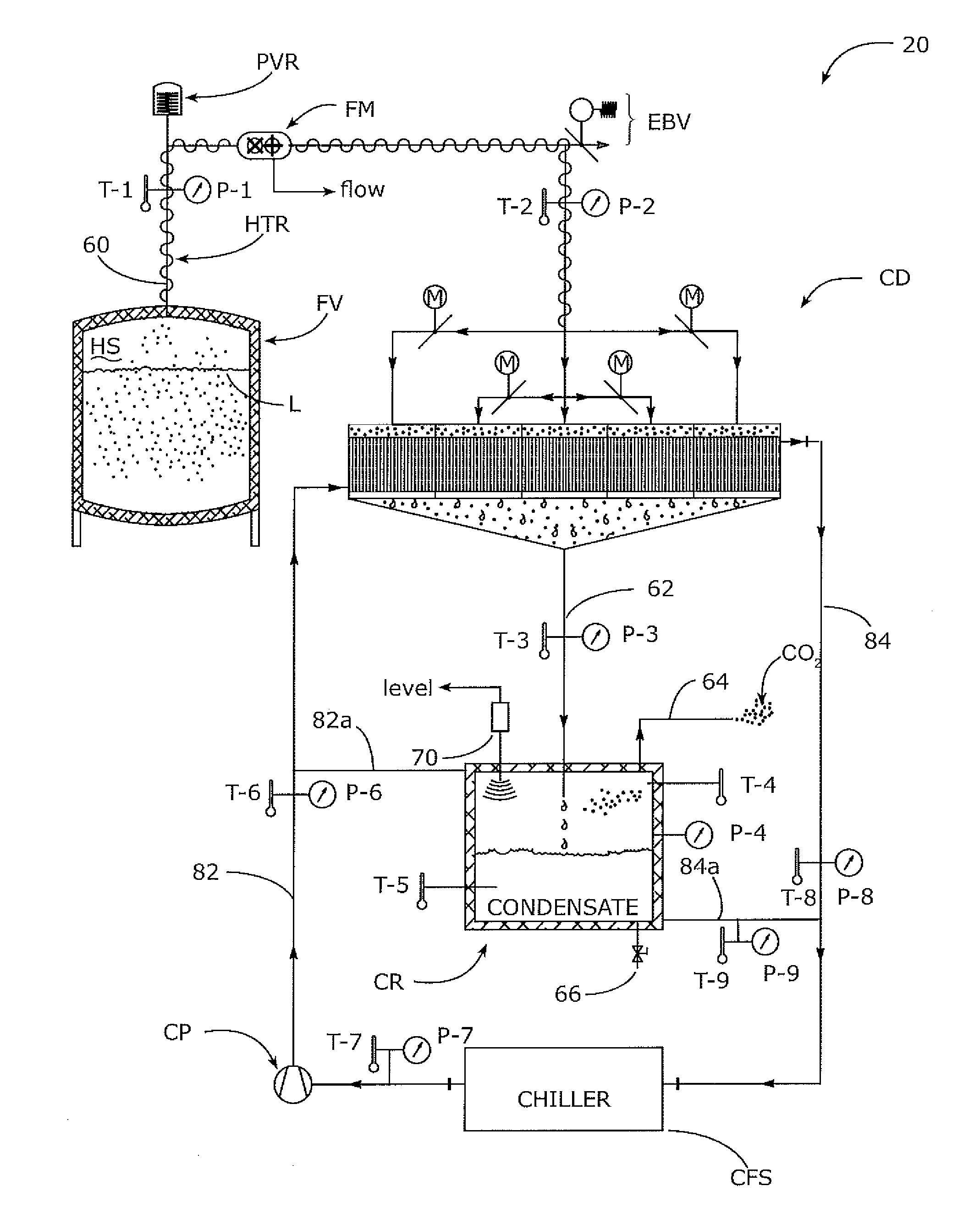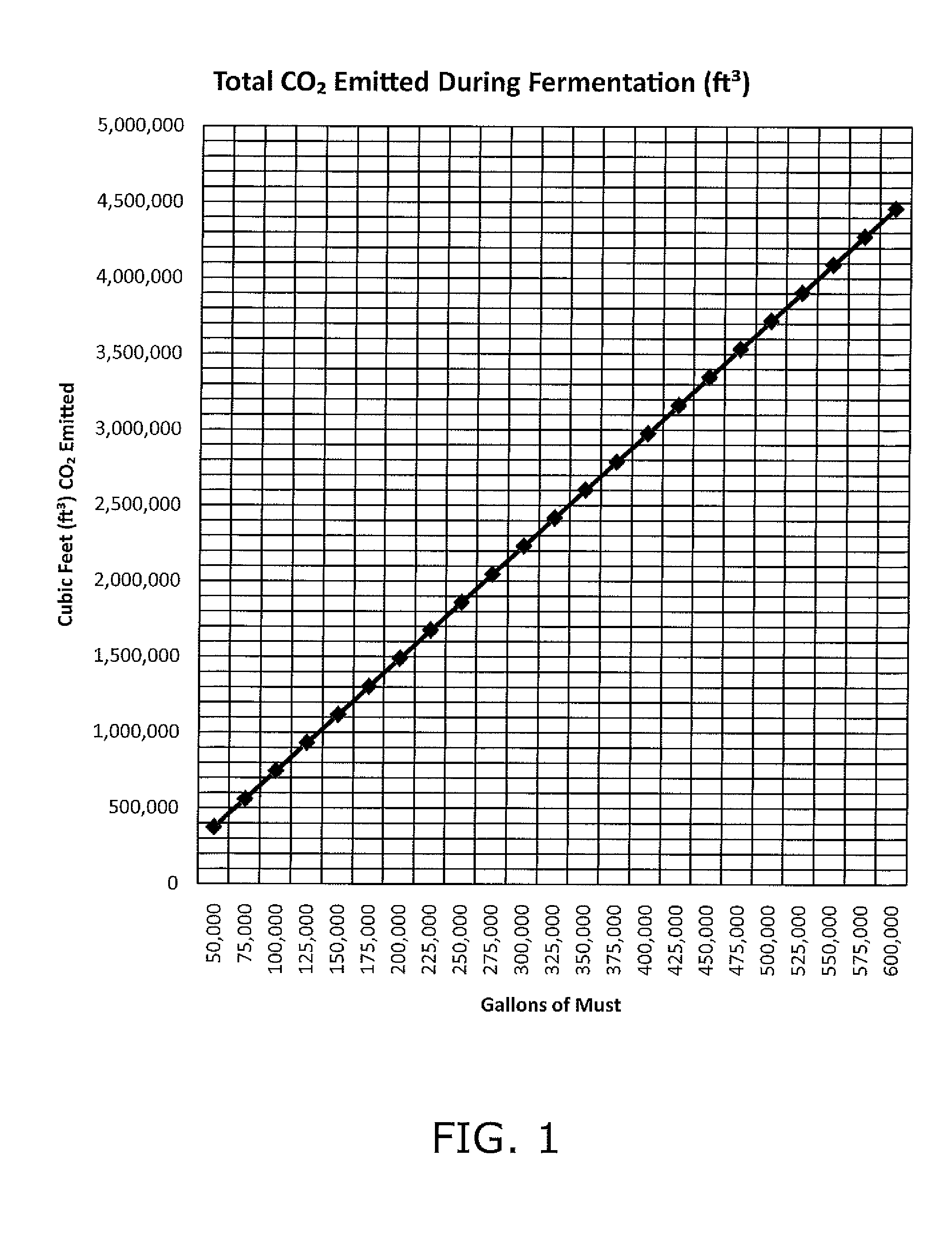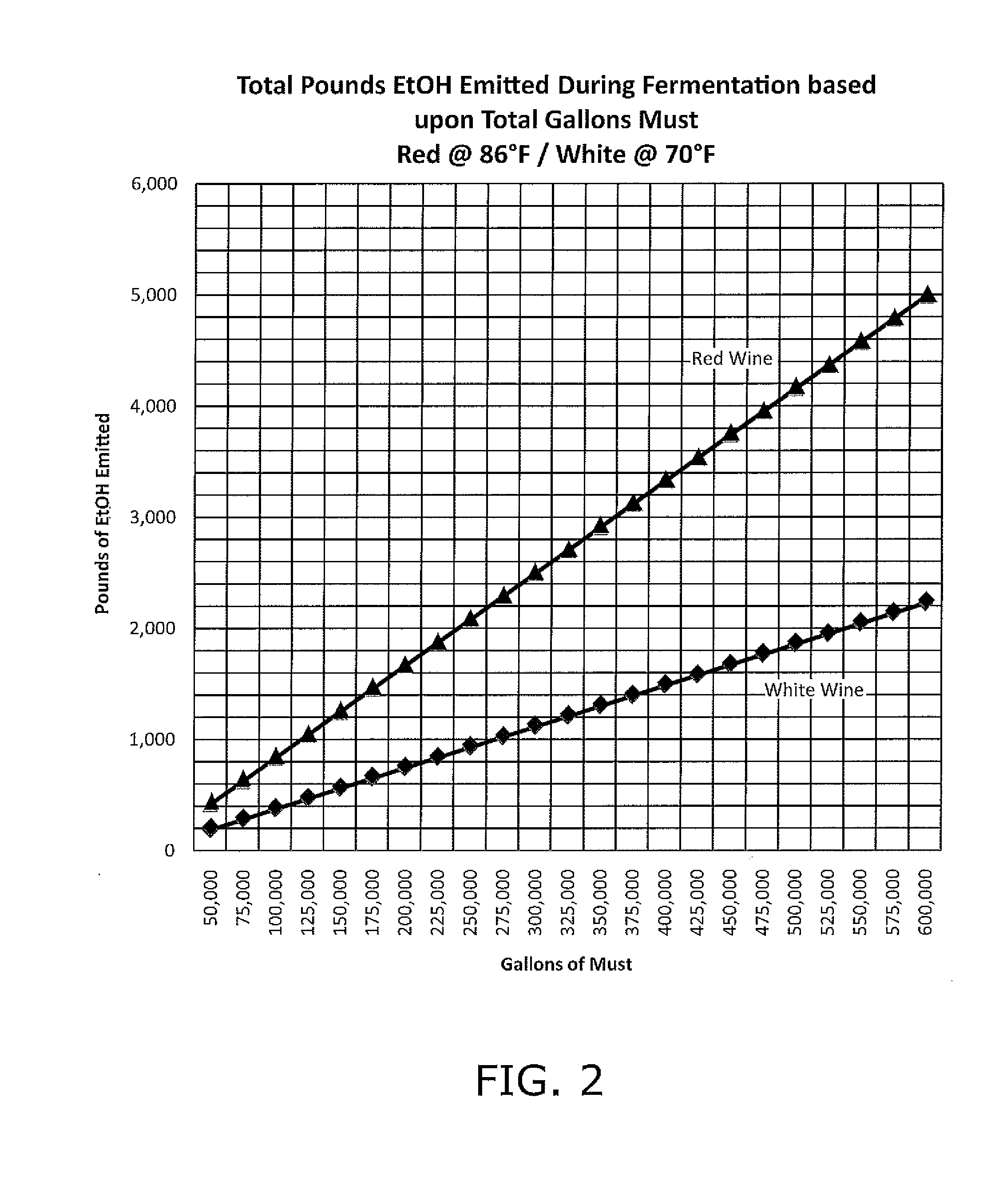Volatile organic compound recovery system and method
a volatile organic compound and recovery system technology, applied in the field of volatile organic compound recovery, can solve the problems of undesirable gaseous etoh loss into the ambient atmosphere, unfavorable recovery of ethanol vapors from the wine-making process, and unfavorable recovery of ethanol vapors from the wine-making process, and achieve the effect of increasing or decreasing the condensation capacity
- Summary
- Abstract
- Description
- Claims
- Application Information
AI Technical Summary
Benefits of technology
Problems solved by technology
Method used
Image
Examples
example 1
[0096]Example I demonstrates capture of EtOH emissions with CO2 as a carrying vehicle from a distilled spirits solution.
[0097]A series of six (6) experiments were performed with three different distilled spirits through which CO2 was dispensed; Tequila, Rum, and Vodka. The solutions were heated between 72° F. and 100° F. in a 10 L vessel and compressed CO2 was dispensed through three stainless steel 0.5-micron bubblers to simulate CO2 evolution from fermentation. A glass condenser column with a chilled water jacket was utilized for condensing the vapor emitted from the test vessel with varying cooling water temperature ranging from 32° F. to 42° F.
[0098]The results of the experiments showed that EtOH was successfully captured along with water and the base solution esters. Condensates ranged from 30.7 to 73.1% EtOH.
example 2
[0099]Example 2 verifies the capture of EtOH emissions with CO2 as a carrying vehicle from a red wine solution at a lower alcohol level than in Example 1.
[0100]A series of three experiments were performed utilizing red wine with varying levels of EtOH (from 11.5 to 12.4%). The wine solutions were heated to between 72° F. and 83° F. in a 10 L vessel and compressed CO2 was dispensed through three stainless steel 0.5-micron bubblers to simulate CO2 evolution from fermentation. A glass condenser column with a chilled water jacket was utilized for condensing the vapor emitted from the test vessel with varying cooling water temperature ranging from 32° F. to 45° F.
[0101]The results of these experiments showed that EtOH was successfully captured along with water and wine esters.
example 3
[0102]Example 3 demonstrates capture of EtOH emissions from a grape must fermentation with naturally evolved CO2.
[0103]A 15-gallon fermentation was performed in a high density polyethylene (HDPE) fermentor. The base grape must Brix was increased to 22° B by adding sugar and then inoculated with saccharomyces cerevisiae yeast to induce fermentation. The fermentation was allowed to increase in temperature naturally from 70° F. to 83° F. and observed over 5-days by hourly recordings of the instrumentation. A glass condenser with a chilled water jacket was utilized for condensing the evolved vapor from the fermentation with varying cooling water temperature ranging from 30° F. to 54° F.
[0104]The results of the experiment showed that EtOH could be successfully captured from a grape must fermentation along with water and wine esters by using the naturally evolved CO2 as the carrying agent.
PUM
| Property | Measurement | Unit |
|---|---|---|
| temperature | aaaaa | aaaaa |
| temperature | aaaaa | aaaaa |
| temperature | aaaaa | aaaaa |
Abstract
Description
Claims
Application Information
 Login to View More
Login to View More - R&D
- Intellectual Property
- Life Sciences
- Materials
- Tech Scout
- Unparalleled Data Quality
- Higher Quality Content
- 60% Fewer Hallucinations
Browse by: Latest US Patents, China's latest patents, Technical Efficacy Thesaurus, Application Domain, Technology Topic, Popular Technical Reports.
© 2025 PatSnap. All rights reserved.Legal|Privacy policy|Modern Slavery Act Transparency Statement|Sitemap|About US| Contact US: help@patsnap.com



